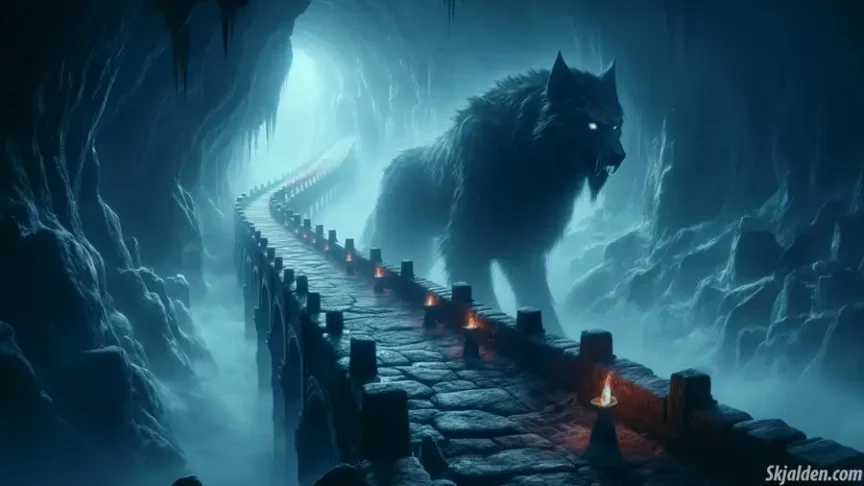Garm is a mysterious hound that stands as a symbol of the underworld and the unknown in Norse mythology. This hound isn’t just any mythological creature; it holds a significant place in the old Norse sagas. Scholars often debate the origins and meaning of Garm’s name, but one thing is clear – in the Norse language, Garm is referred to as a hound, known as ‘hundr’ (Originally, “hound” referred to a type of dog used primarily for hunting).
In the ancient Norse sagas, Garm is shown as the foremost of his kind, much like Odin among the gods and Yggdrasil among the trees. This idea comes from the Grímnismál, a poem in the Poetic Edda. This text doesn’t just name Garm; it elevates him, painting him as a powerful and important being, and solidifying his high status in the mythological world.
Garm’s howling, particularly as mentioned in the Völuspá, is a topic that intrigues many. The howl is not just an ordinary sound but is deeply symbolic, especially in its timing and intensity. Typically, in mythology and folklore, a howl, especially from a creature like Garm, is more than just a form of communication; it’s fueled with meaning.
In the context of Norse legends, Garm’s howling is significant because it occurs at the beginning of Ragnarok, which is a series of apocalyptic events leading to the end of the world and the fall of gods. His howl isn’t an everyday occurrence but a specific and ominous sign that these catastrophic events are about to unfold. Think of it as an alarm bell in the mythological world, signaling that something monumental and world-changing is on the horizon. The howl is described as terrifying, perhaps because of its association with such a drastic change and destruction.
The Gnipa Cave
The Gnipa Cave is the cave where it is believed that Garm will make his terrifying howl. The Gnipa Cave is as mysterious as the howl itself. In the Norse myths, this cave is kind of a puzzle. It’s often thought to be an entrance to Helheim, however, the myths don’t spell out exactly what this cave is or where it is, which makes it all the more intriguing. It’s described as dark and kind of intimidating, which makes it the perfect place for Garm to sound his eerie howl.
It’s interesting to note that Garm is sometimes called a hound (using the Old Norse word ‘hundr’) and other times described as a wolf (‘freki’). This mix-up between hound and wolf is pretty fascinating, especially when you think about how Garm and Fenrir, who’s another legendary wolf, are similar. In the stories about Ragnarok, both Garm and Fenrir are said to break free from their chains. It makes you wonder if there’s some deeper connection between the two.
The story gets even more tangled when it comes to the big battle between the gods and the jötnar during Ragnarok. Tyr, one of the gods who had earlier lost his hand to Fenrir, is supposed to fight Garm. This twist where Garm, Fenrir, and Tyr’s stories all cross paths really make you think. Are Garm and Fenrir actually different, or are they just two sides of the same coin in these myths?
